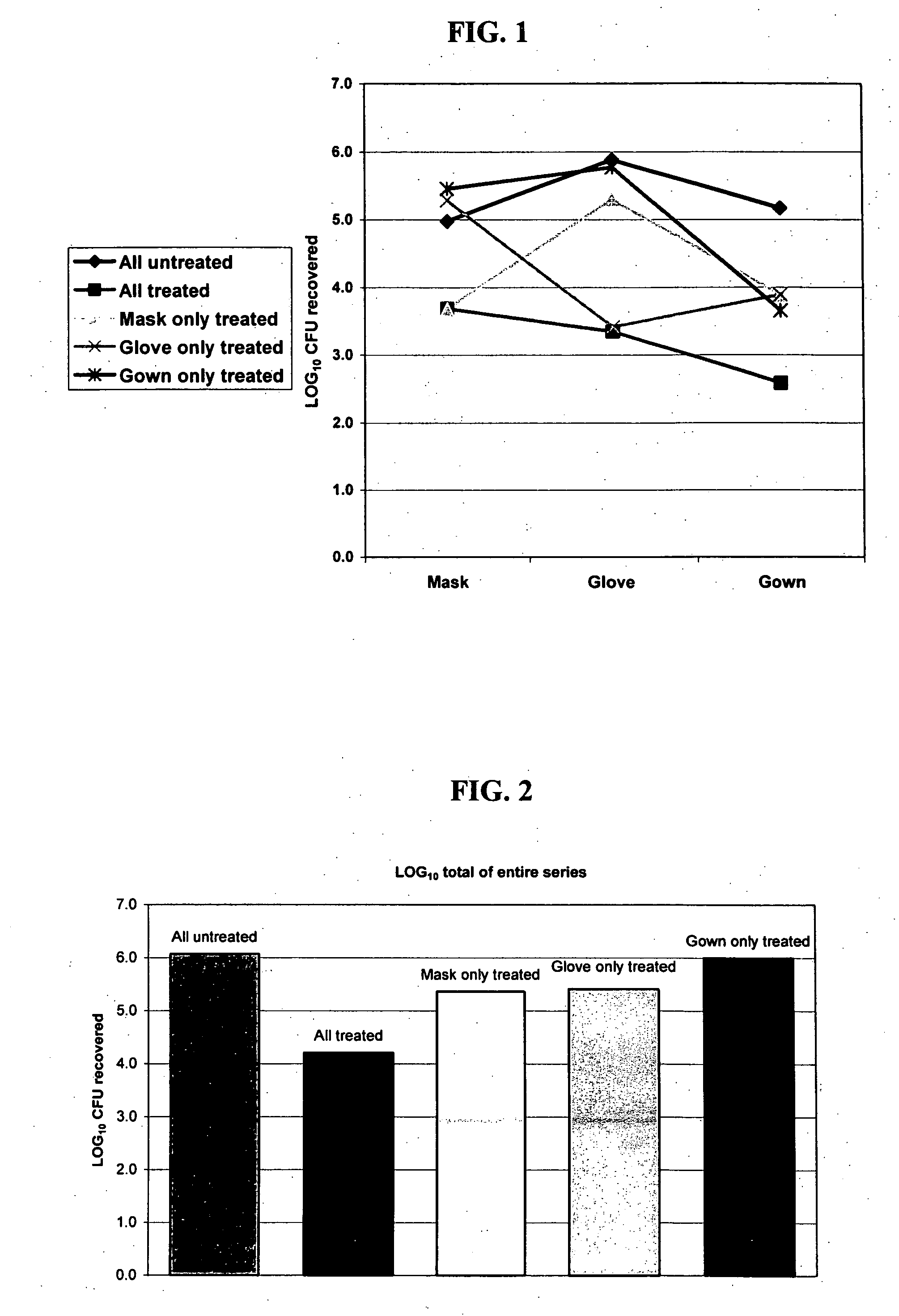Germicidal surface-covering assembly
a surface-covering assembly and germicidal technology, applied in the field of germicidal surface-covering assembly, can solve the problem of fewer viable pathogens on the third treated surface, and achieve the effect of reducing viable pathogens, reducing viable pathogens, and reducing viable pathogens
- Summary
- Abstract
- Description
- Claims
- Application Information
AI Technical Summary
Benefits of technology
Problems solved by technology
Method used
Image
Examples
example
[0076] This example was structured to assess whether germicidal treated products in combination (gloves, mask and gown) are more effective at reducing the transfer of organisms than any one product alone following purposeful contamination during simulated use. To carry this out, A piece of conventional polyolefin nonwoven face mask material was inoculated with Staphylococcus aureus ATCC 27660 suspended in 5.0% w / v bovine serum albumin (BSA) solution. A test subject handled the inoculated material with a conventional nitrile examination glove for 20 seconds, followed by handling a piece of polyolefin nonwoven gown material for 20 seconds. After contact, the test articles were placed in a neutralizer and tested for the amount of viable bacteria extracted from each material.
Test Articles:FU = Untreated face mask materialFT = Antimicrobial face mask materialGU = Untreated gloveGT = Antimicrobial gloveWU = Untreated gown materialWT = Antimicrobial gown materialScenario(s):F →G →WSeries...
PUM
| Property | Measurement | Unit |
|---|---|---|
| time | aaaaa | aaaaa |
| time | aaaaa | aaaaa |
| surface tension | aaaaa | aaaaa |
Abstract
Description
Claims
Application Information
 Login to View More
Login to View More - R&D
- Intellectual Property
- Life Sciences
- Materials
- Tech Scout
- Unparalleled Data Quality
- Higher Quality Content
- 60% Fewer Hallucinations
Browse by: Latest US Patents, China's latest patents, Technical Efficacy Thesaurus, Application Domain, Technology Topic, Popular Technical Reports.
© 2025 PatSnap. All rights reserved.Legal|Privacy policy|Modern Slavery Act Transparency Statement|Sitemap|About US| Contact US: help@patsnap.com

